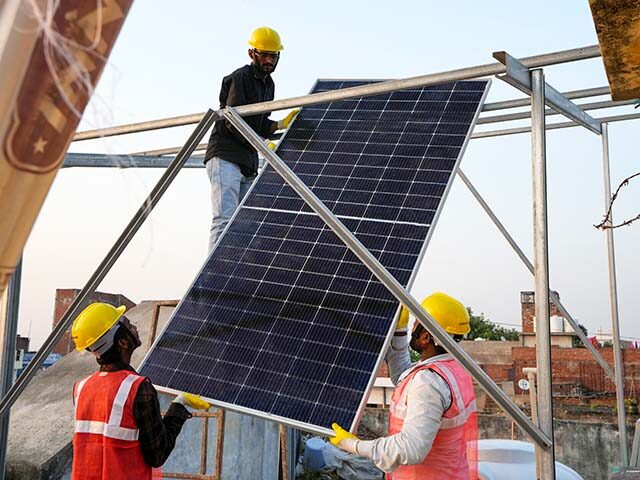Standard & Poor’s CRISIL analytics firm published a report on Wednesday that predicted India will become a major exporter of solar energy equipment by 2029.
The report noted that India has implemented policies favorable to the solar industry, it has an ample supply of skilled labor, and it can secure the raw materials needed for solar manufacturing.
India’s Ministry of New and Renewable Energy said the government’s solar-friendly policies include permitting foreign direct investment in solar projects, special financing for solar development, government support for solar energy research, and state subsidies for solar production.
India has also imposed steep tariffs on imported solar cells to give its domestic industry a leg up. Some Indian solar companies say the tariffs are too high, increasing the cost of components they must import until domestic production improves.
Ironically, one of India’s biggest hurdles is difficulty in producing the most vital component of solar panels, polysilicon, and the reason it has so much trouble is that energy costs in India are higher than in the nation that currently dominates the solar industry, China. About 80 percent of the world’s solar cells are produced in China.
Despite these obstacles, CRISIL projected solar demand in India will increase steadily, with corresponding increases in domestic production, until the industry ramps up enough to become a significant exporter in about five years. The authors expected rising global demand would also inspire Indian investors to put more money into solar manufacturing.
Indian manufacturers believe they have a chance to break China’s stranglehold on the industry because the moral hazard of obtaining solar panels from China – with its environmentally devastating mining practices and use of forced labor – is so high for buyers in other countries. Also, the Wuhan coronavirus pandemic made international corporations nervous about running their supply chains entirely through China.
On the other hand, there are signs the “solar boom” is winding down after a few years of very rapid growth. China’s massive production has created a glut of solar inventory, pushing prices down and making big investments in new solar production look risky. Some critics accuse China of deliberately creating this oversupply situation to push prices down and keep competitors out of the market.

COMMENTS
Please let us know if you're having issues with commenting.